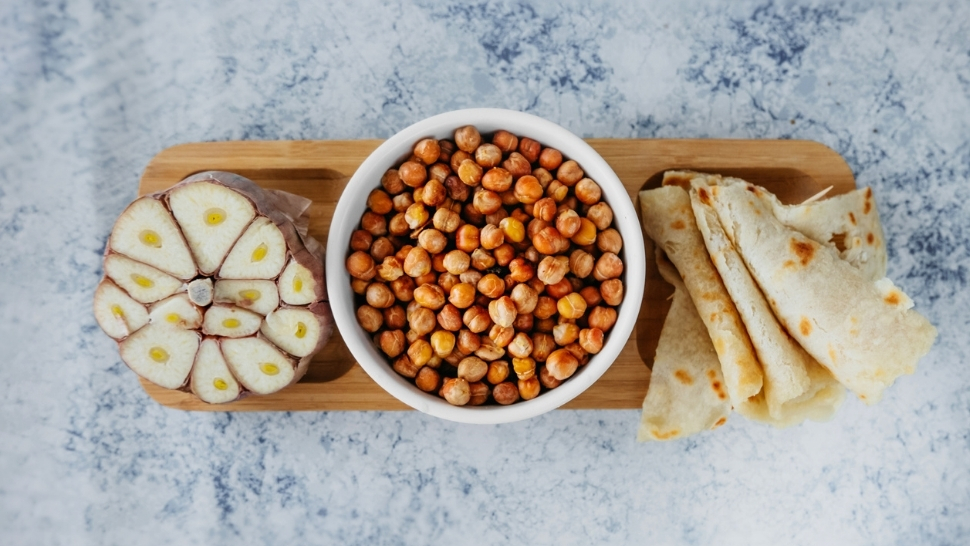
What’s the buzz?
Chickpeas – a valuable addition to your kitchen or just another trend?
What does the science say?
The humble little chickpea is getting the star treatment, and we’re here for it. From covering them in chocolate to transforming them into rice, pasta, ice cream, puffed snacks, and more, chickpeas have proven themselves to shine in more than just hummus (which for the record is still one of our favorite uses for this bean). They are nutritional powerhouses. One cup contains 15 grams of plant-based protein, 12 grams of fiber, 25% of your daily iron needs, 70% of your folate needs, and 20% of your magnesium needs, along with several other important vitamins and minerals. Eating chickpeas along with other pulses as part of a plant-rich diet, may also have favorable impacts on the risk of developing cardiovascular disease, type 2 diabetes, digestive diseases, and some cancers.
Americans may have become obsessed with chickpeas in the last few years, but garbanzo beans and their flour have been a staple in many cuisines around the world for a long time. Socca, a popular pancake-like French street food from Nice, is made from chickpea flour, water, and olive oil. Chickpeas have long been the star of the Indian dish chana masala; garbanzos con (with spinach) from Spain; fried spiced chickpeas with harissa from North Africa; a Palestinian street food balilah; falafel; and the list goes on. But chickpeas are finally getting the U.S. love they’ve long deserved, now that consumers are not only looking to eat more plants, but are also turning toward snacks, pastas, and more made from whole foods.
Chickpeas are an incredibly versatile bean. Blended with broth, they can create a creamy-textured soup or sauce, sans the cream. They can be added to a smoothie for a fiber and protein boost or used as the base for blondies. Chickpeas can be air-fried, seasoned like Cheetos, or roasted for a crispy snack. The flour can be used in baked goods for a protein-packed, gluten-free option, as the base for sweet or savory pancakes, made into pizza crust, added to granola for a nutritional boost, and much more. Is there anything the chickpea can’t do?!
Chickpeas also offer significant budgetary advantages which make them a smart choice for cost-conscious shoppers. Dried and canned chickpeas are an inexpensive protein source and have a longer shelf life than meat or dairy. You can often buy them in bulk to take advantage of further cost savings. As mentioned, chickpeas are extremely versatile and can be used in a multitude of ways which also can reduce the likelihood of food waste and money lost.
What’s the takeaway?
Chickpeas have a lot to offer from a culinary and nutritional standpoint but are also cost effective. Try them in both traditional and new-to-you forms to get the most from this mighty bean. Not surprisingly, food manufacturers have jumped on the chickpea train and checking all the health claim boxes they can. If chickpea is one of the top three ingredients, it’s likely adding to the nutritional value of the food. But just because a food has chickpeas in it, doesn’t automatically make it good for you. As with any food trend, be wary of health claims on food packages and read ingredient lists to get a full understanding of what’s in your food.